Transient Response
20% Load – 20ms
| Voltage | Before | After | Change | Pass/Fail |
| 12V | 12.003V | 11.666V | 2.80% | Pass |
| 5V | 5.002V | 4.881V | 2.41% | Pass |
| 3.3V | 3.283V | 3.138V | 4.43% | Pass |
| 5VSB | 5.050V | 5.001V | 0.97% | Pass |
50% Load -20ms
| Voltage | Before | After | Change | Pass/Fail |
| 12V | 11.980V | 11.816V | 1.36% | Pass |
| 5V | 4.992V | 4.865V | 2.55% | Pass |
| 3.3V | 3.275V | 3.123V | 4.64% | Fail |
| 5VSB | 4.999V | 4.948V | 1.02% | Pass |
The 3.3V rail performs badly here; the same goes for the 12V rail in the first test.
Transient Response ATX v3.x Tests
The PSU passes all ATX v3.1 transient response tests, but the 3.3V rail is right on the limit in the 200% load test.
The 12V rail drops low, especially in the 200% load test. Given the fixed cables, which help since they minimize resistance, compared to modular cables, I expected better results.
Pages:

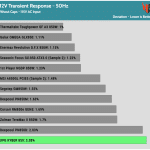


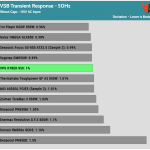
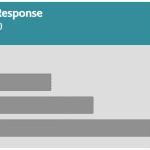
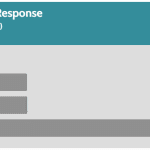

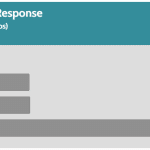

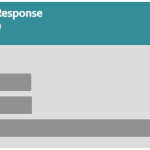

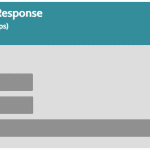
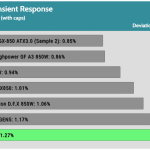
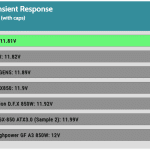

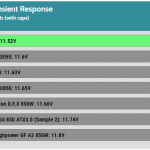
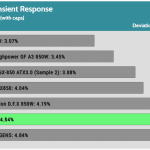

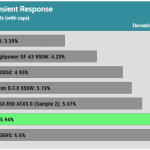



Please help! Is the Kyber 850w worth it for $80usd? Bought it the other day, confusing it for the Core Reactor II. I’m on a tight budget but I hope it lasts. If not, I have to save up to get a more expensive one.
It is a decent PSU, yes. The Core Reactor II 850W is typically above 100$ as I remember.
Hi, I have bought a prebuilt with this psu, I have a rtx 5080 and a ryzen9 9950x3d should I be worried and upgrade the psu out of my pocket to save my components from getting fried or this is safe to use? I have already done extensive stress testing and everything was working fine!
I would change the PSU to something stronger and with higher performance for this system!
I am unsure if many users will opt to pay 110 dollars for a native-cables-only PSU in 2024, given that with 10-15 dollars more, they can get a fully modular ATX v3.x compliant (e.g., the Thermaltake GF3 A3 850).
On page 11, I think there’s a typo in the thermaltake model’s name (GF A3 vs GF3 A3)